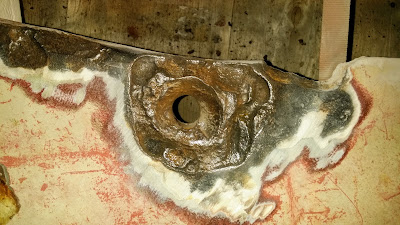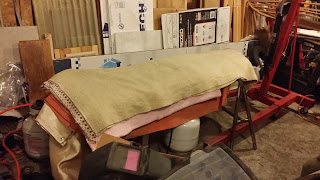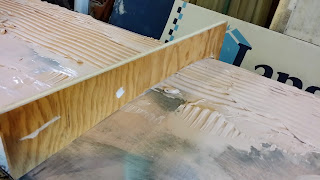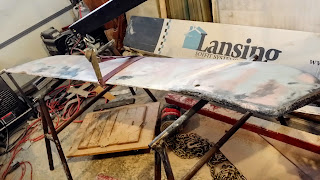I'm not the first person to restore the swing keel on their Catalina 22, and I'm sure I won't be the last either. Someone has done it before you, and in the age of the internet, someone has probably documented it too. I owe a debt of gratitude to those who have gone before and have documented it, their efforts helped me immensely. Specifically I want to thank The $tingy Sailor. His blog posts on his keel refurbishment project were invaluable.
With that said, let me begin my tail. In the fall of 2014 a very experienced local sailor from Bonneville School of Sailing took a look at the keel on Aura, ULYC's Catalina 22, and pronounced it unsafe to sail. It was fall, the sailing season was over, the project was put on the back burner. The following spring, it was still on the back burner, meaning that boat wouldn't be in the water in 2015, but the loss of use of the boat spurred several of us into action and we came up with a cunning plan.
The keel is held on by two brackets, each bracket is held by two bolts. When Aura is on her trailer, the keel sits on a bunker and isn't supported by the brackets or by the cable, so, our cunning plan was to remove the bracket bolts, and the cable pin, so that the keel was simply sitting in the trunk and on the trailer, then launch the boat into the water, and retrieve her onto another trailer, leaving the keel on the first trailer, ready to be hauled off for restoration.
I'm sorry to say, I don't have any pictures of the operation, mostly because it went smoothly. We made a web of tie down straps under the keel on the trailer, so that when it fell over it wouldn't fall through the trailer frame and onto the boat ramp. Then, once it was alone on the trailer, we secured it with a nice length of 1" line and, "Bob's your uncle!"
Here you can see one of the tie down straps and the 1" rope. This first step was successful. If only it were to continue that way.























